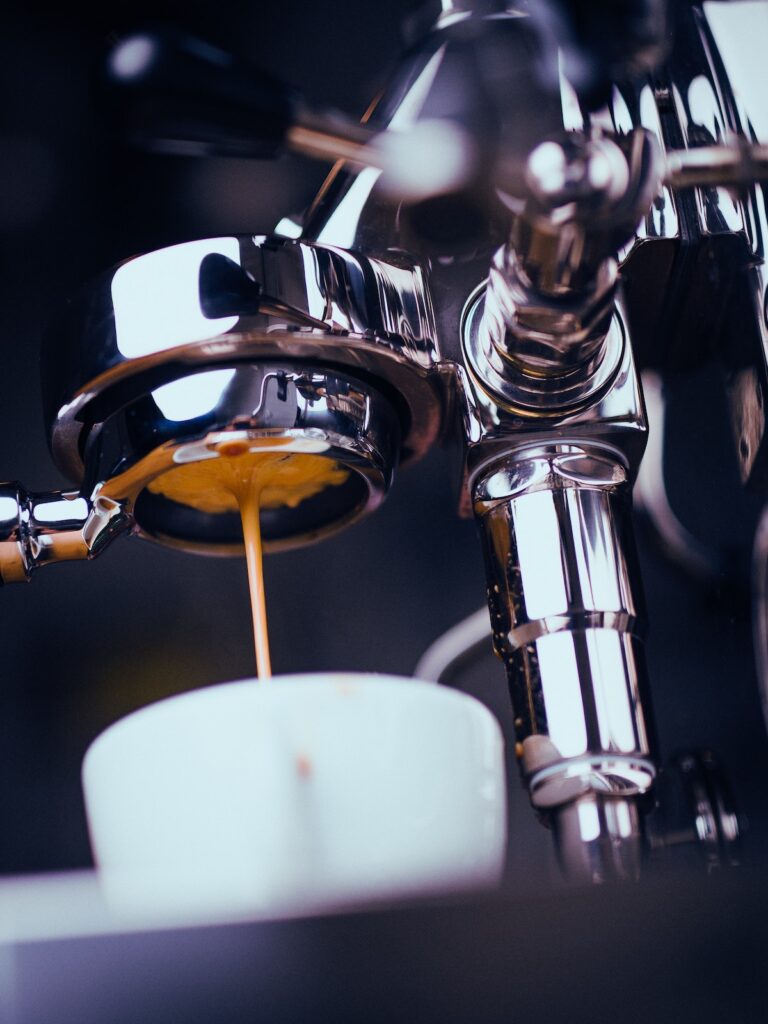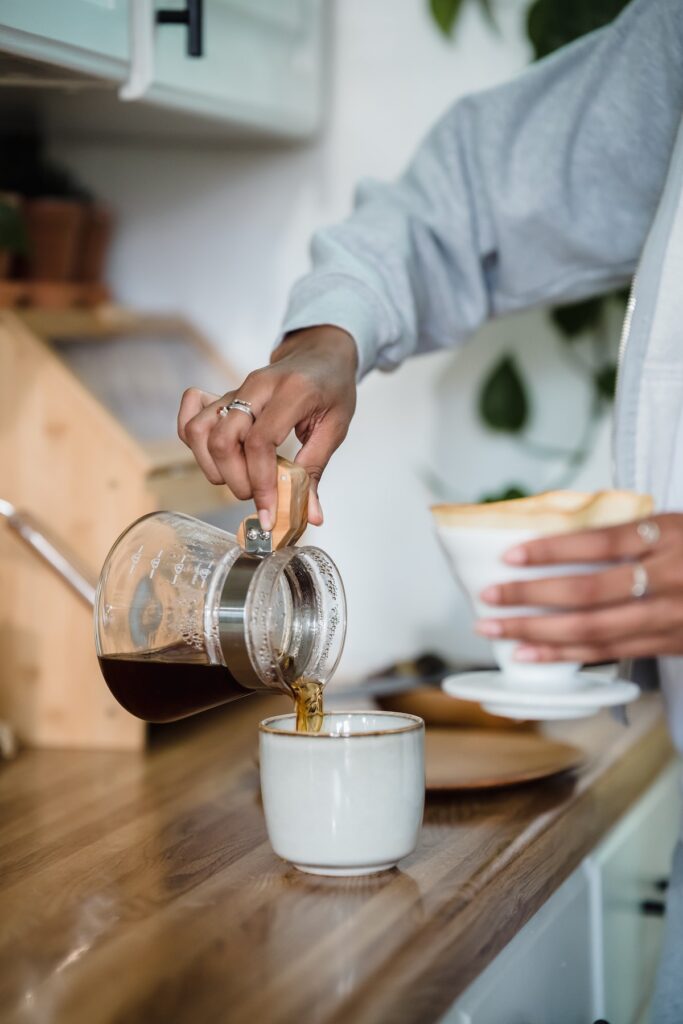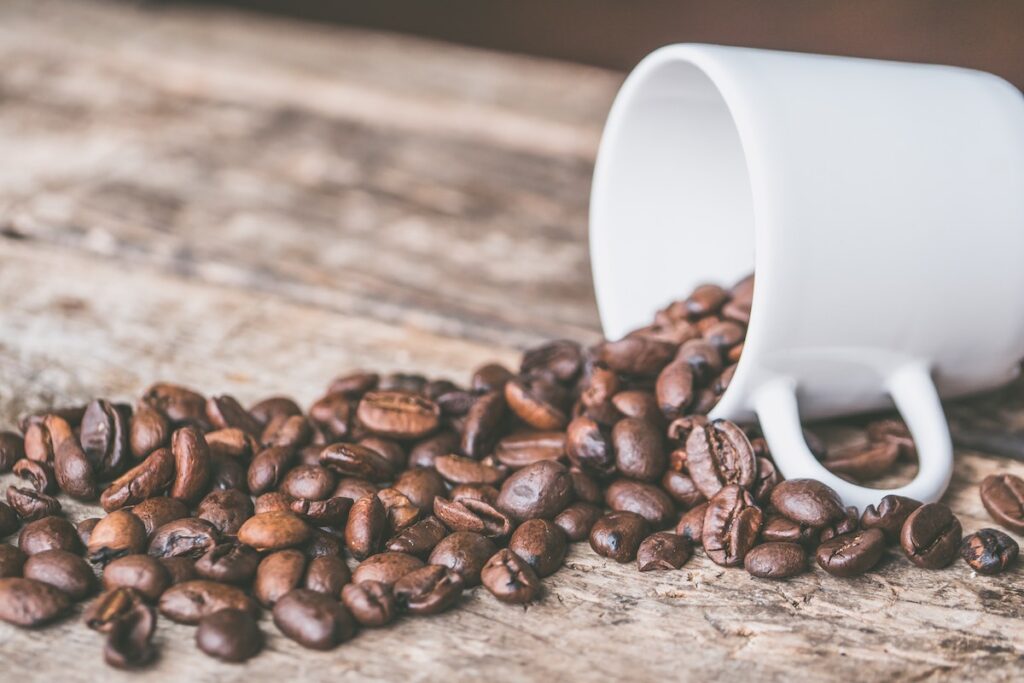If you have ever wondered whether a shot of espresso has more caffeine than a regular coffee, then welcome aboard! The ol’ coffee vs espresso caffeine debate is more common than you’d think.
Especially considering all the many coffee options available today, even for coffee aficionados, it’s normal to feel confused about what each coffee beverage includes and why is it different from other ones. So if you are here today, it means you want to know the answer!
Today we are showcasing the differences between espresso vs coffee – like drip coffee – and we’re even going to show the differences in terms of caffeine. Let’s get started!
What is an espresso?
If you go to a coffee shop, you’ll find a wide range of coffee types, roast level like dark roast, medium roast, or light roast, and flavors to choose from: There is Cafe au latte, instant coffee, Americano, Espresso, Latte, Cortado, Black, Affogato, Flat white, Irish, Mocha, Macchiato, Red-Eye (which actually has both coffee and Espresso), Cappuccino, Turkish coffee, cold brew, well, you get the idea. There are many aspects that come into play and have a significant impact on the end result, for example:
- Water temperature and amount of water
- The type of ground beans
- The machine’s high pressure or low pressure levels
- The brewing method, ie. French press coffee
- The roast – lighter roasts taste different from darker roasts
As you’d expect, espresso is one of the most common coffee beverages you will see in any coffee shop.

Espresso (which means “express” in Italian) is one of the most common and popular coffee brewing methods. Shots of espresso can only be created with a special machine (La Spaziale S1 Dream T), and it’s made by forcing boiling water under pressure through a very fine coffee grind (Baratza Sette 270 Coffee Grinder) size. This drink has a higher caffeine concentration which means it has a smaller serving size, about 1.5 to 2 oz.
Normally, an espresso is somewhere between 1.5 to 2-3 fluid ounces, has 5.4 calories, and has 127 mg of caffeine. Normally, a one-ounce shot of espresso contains between 40 and 75 mg of caffeine. But how much caffeine is that? Is that what you need to really wake up in the mornings, or would a black coffee do that job better?
Let’s find out.
What is brewed coffee?
Now let’s take a look at brewed coffee, such as regular drip coffee and pour-over coffee. These methods work by pouring hot water over coffee grounds over a longer period of time. A typical cup of coffee is somewhere between 8-12 oz, has 2.4 calories, and has 96 mg of caffeine.

So regular black coffee, as you can see, is not as concentrated caffeine-wise as espresso. That is if we assume both drinks are made with the same type of coffee bean (Illy espresso 3 pack Whole Bean) – because not all coffee species are the same. For example, Robusta beans are stronger than Arabica beans (Kopi Luwak Arabica Coffee (100G)) and have much higher levels of caffeine.
While an espresso machine (Quick Mill Vetrano 2B EVO) can brew a complex and aromatic shot of coffee in under a minute, a Moka pot or pour-over coffee will take several minutes since it relies on the slow filtering of hot water through fine coffee grounds.
So, in other words, what makes the difference between a shot of espresso vs coffee, is the brewing method. Like we mentioned before, other methods take time because they use slow filtering of hot water, while espresso machines (Quick Mill Silvano EVO) pressurize and shoot hot water through finely-ground coffee beans.
Whatsmore, a shot of espresso coffee and a cup of black coffee do taste different. This is most likely because since espresso is not done with a filter, it can keep all of the flavor-filled oils.
Types of coffee beans
If you are paying attention to the caffeine levels in your coffee, then you need to take a look at the coffee type, coffee blends, and your coffee beans roasting process, because they also play a fundamental role in your caffeine intake.

There are four main types of coffee beans: Arabica, Robusta, Excelsa, and Liberica – and they all taste very differently. From low acidity to high acidity, aroma and taste, the roasting and extraction process makes a big difference in the way your taste buds sense your different coffee drinks.
- Arabica: Arabica (Caffe’ Vergnano 1882 Arabica 100% Espresso) is probably the most popular type of coffee beans, and also the most produced worldwide – over 60% of coffee beans are Arabica. They are easier to produce because their trees are very easy to take care of. They just need high altitude and to grow in an area with rainfall and shade. Arabica coffee beans are full of flavor and aroma. They have less caffeine than other beans.
- Robusta: The second most popular variety is Robusta coffee beans. Trees of this variety grow in hot climates with intermittent rainfall and different altitudes. If what you are looking for is a higher concentration of caffeine, then Robusta is your best choice as it has double the amount of caffeine than Arabica. Robusta coffee has a strong coffee flavor with a chocolate hint.
- Liberica: Liberica is more uncommon than Arabica and Robusta, and is the only type of coffee bean in the world that has irregular shapes. Liberica coffee beans have a unique aroma with a fruity and floral taste.
- Excelsa: Excelsa coffee beans can be considered part of the Liberica family, however, they have a very different taste. These coffee beans are also less common than Arabica and Robusta.
So espresso vs coffee: which one has more caffeine content?
So we’ve explained the difference in concentration between a shot of espresso and coffee. Now it’s time to answer the question: Which has more caffeine?

Normally, eight ounces of brewed coffee contains 95 to 165 milligrams of caffeine, so about 12 to 21 milligrams per ounce. Whereas espresso has 47-64 milligrams of caffeine per ounce. But here’s the trick: While espresso shots have more caffeine, you usually only drink one or two shots at a time, while normally, most people drink more than one or two cups of coffee in the mornings.
A single shot of espresso is more caffeinated because it’s more concentrated, but if you drink more than a cup of coffee a day, you are consuming more caffeine
Of course, you can also drink decaf coffee in both versions. If you prefer that, a 2 oz of decaf espresso contains less than 1mg of caffeine (around 0.6mg of caffeine), and a cup of brewed coffee would contain about 2.4mg of caffeine – not 0, but a minimal amount of caffeine.
Now, if what you need on a special day is something that will truly wake you up, maybe you have an important test or presentation coming up, whatever it is, you can go to your favorite coffee shop and order a Red-eye: red-eye is a combination of coffee and espresso, making it your best bet if you need some extra caffeine that day.
There is yet another difference between coffee and espresso: espresso(Illy Espresso Classico – Fine Grind Medium Roast – Case of 6) does affect you a lot faster than black coffee. Let’s say you take 20-30 minutes sipping a cup of coffee. It’s good that you are enjoying it, however, you will feel the effects later. But with a shot of espresso, you’re most likely to drink it all at once, meaning you get about 80mg of caffeine in just a couple of minutes. Also, a lot of people take a double shot of espresso in the mornings meaning they’ll be consuming a lot of caffeine at once.
What a way to get some extra energy!
This is all for today! We hope this article was informative for you. If you enjoyed this article, please share it with your friends and family that might enjoy learning a bit about caffeine in coffee vs espresso.
See you next time!
